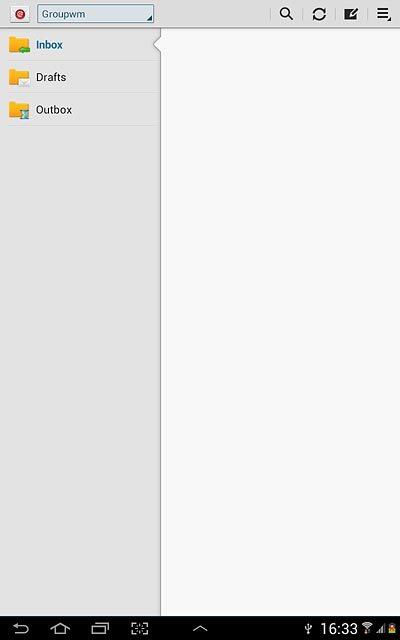
Samsung Galaxy Note 10.1
Set up your device for POP3 email
If you're using a POP3 email account in your email application on your computer, you can also set it up on your device. Follow these instructions to set up your device for POP3 email.
Please note that these instructions are based on a POP3 email account. If you have a web-based email account, such as Hotmail, Yahoo! Mail or Gmail, you need to use the settings for web-based email. Click here for information on how to the set up your device for web-based email.
1. Find "Access Point Names"
Press the menu icon.
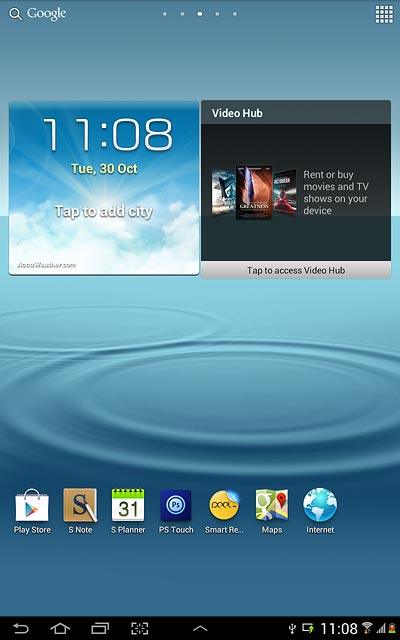
Press Settings.
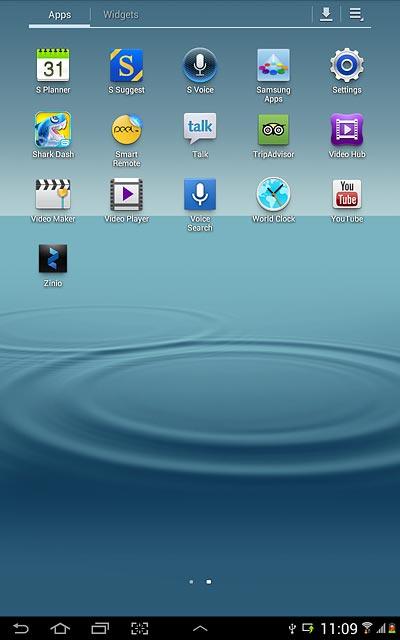
Press More settings.
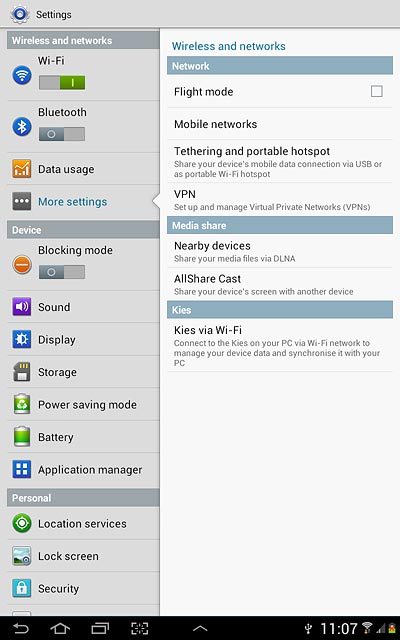
Press Mobile networks.
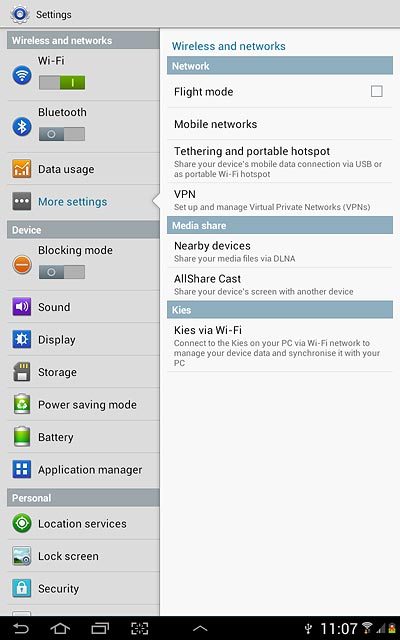
Press Access Point Names.
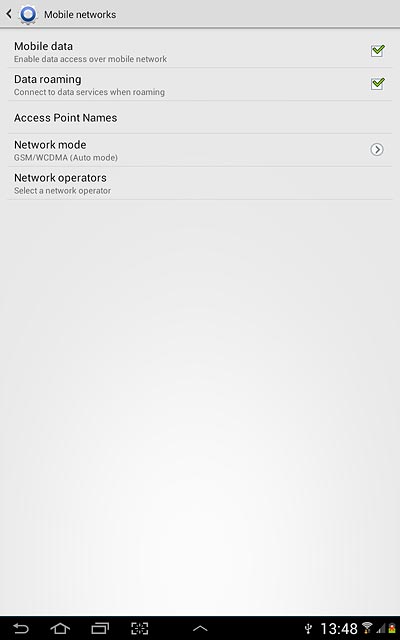
2. Create new data connection
Press the menu icon.
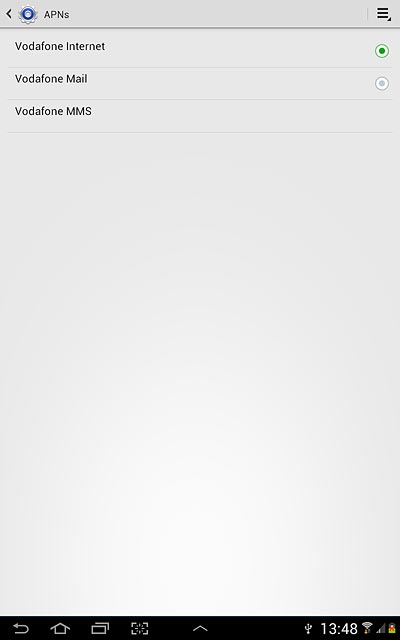
Press New APN.
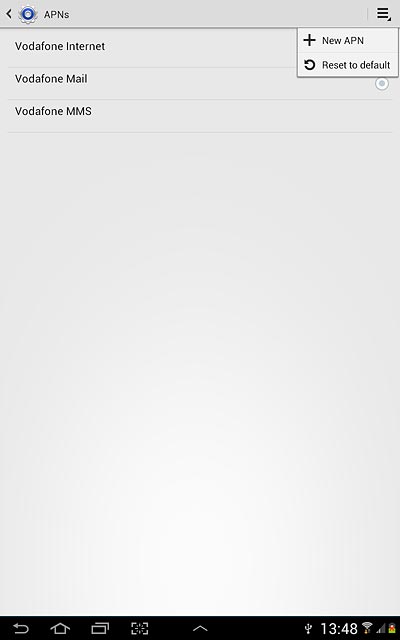
3. Enter data connection name
Press Name.
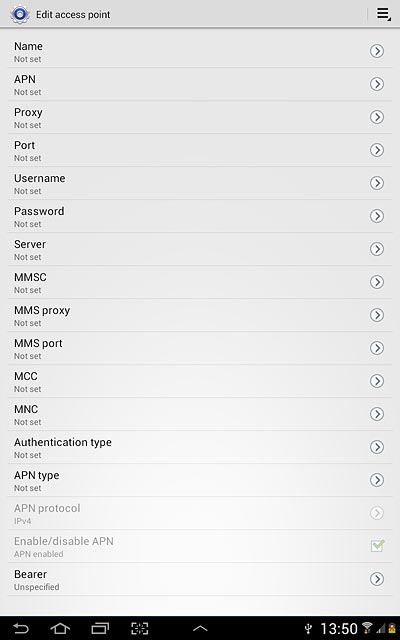
Key in the required name and press OK.
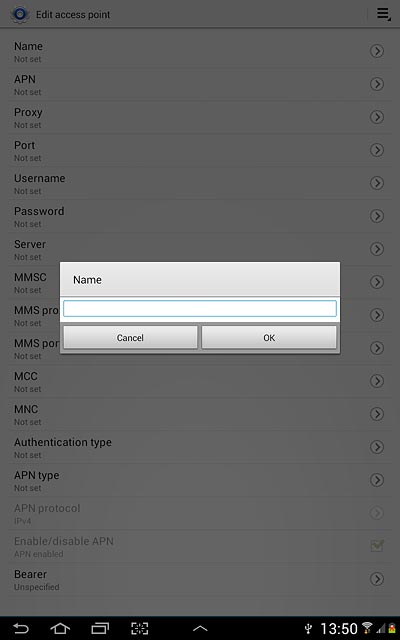
4. Enter APN
Press APN.
An APN is used to establish a data connection.
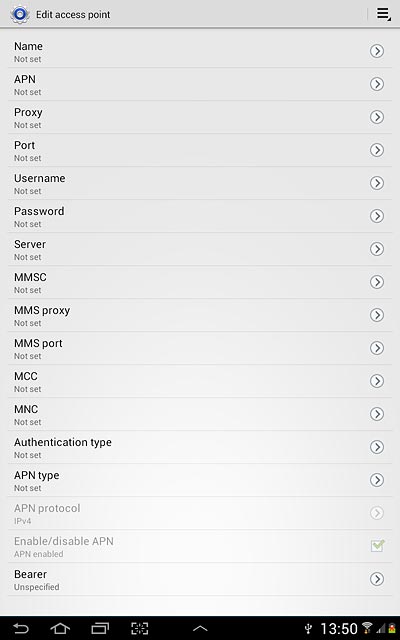
Key in www.vodafone.net.nz and press OK.
An APN is used to establish a data connection.
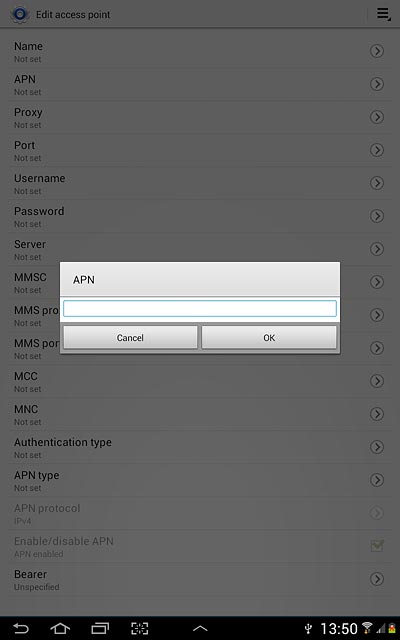
5. Enter country code
Press MCC.
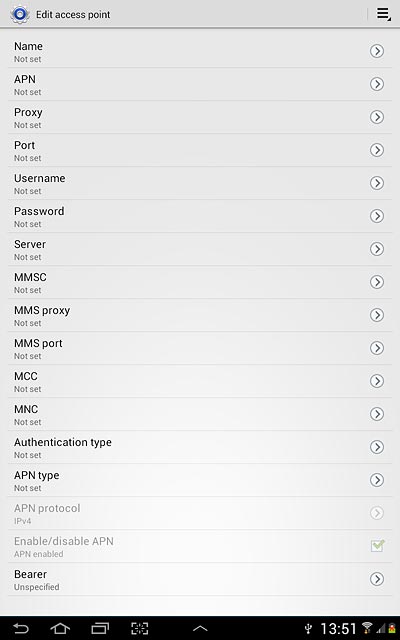
Key in 530 and press OK.
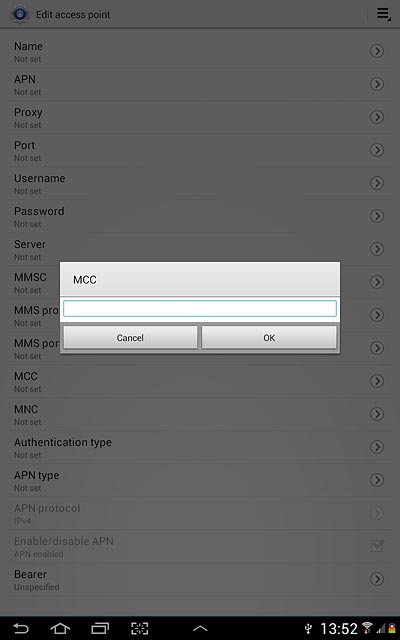
6. Enter network code
Press MNC.
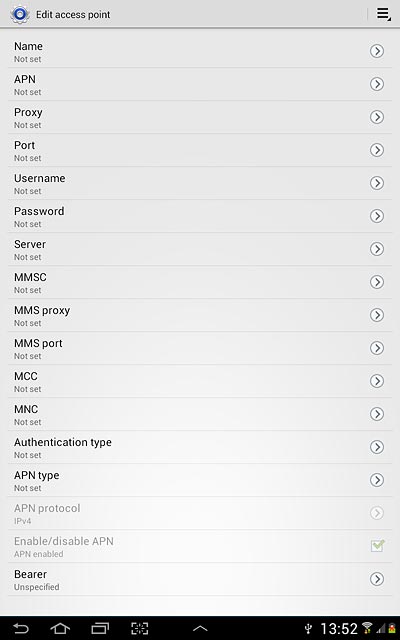
Key in 01 and press OK.
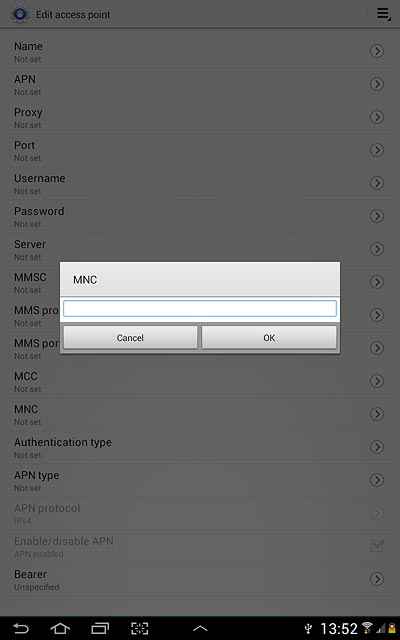
7. Select authentication type
Press Authentication type.
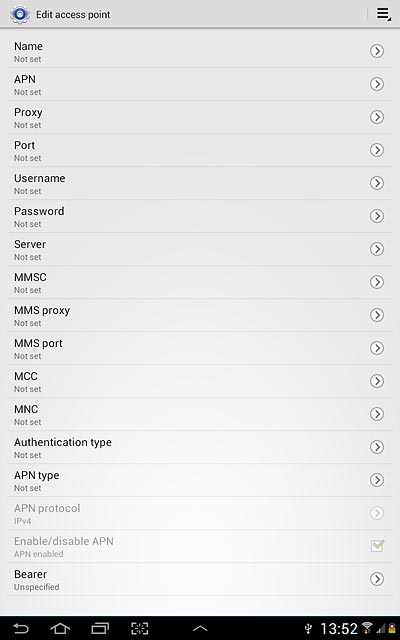
Press PAP.
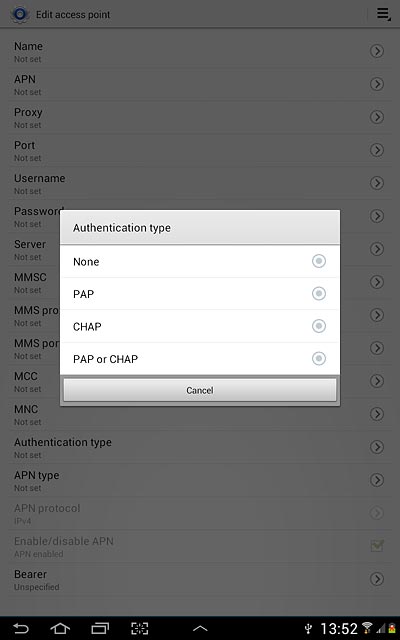
8. Select APN type
Press APN type.
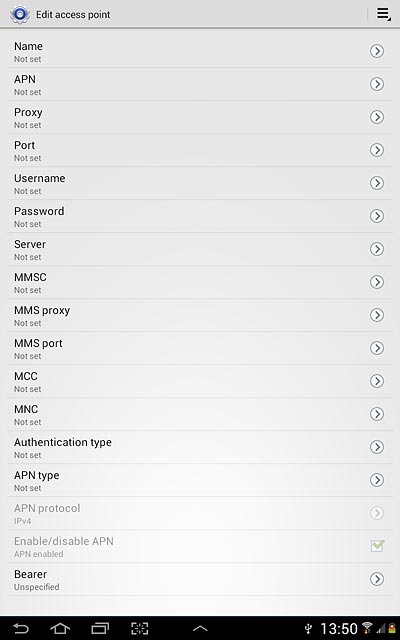
Key in default and press OK.
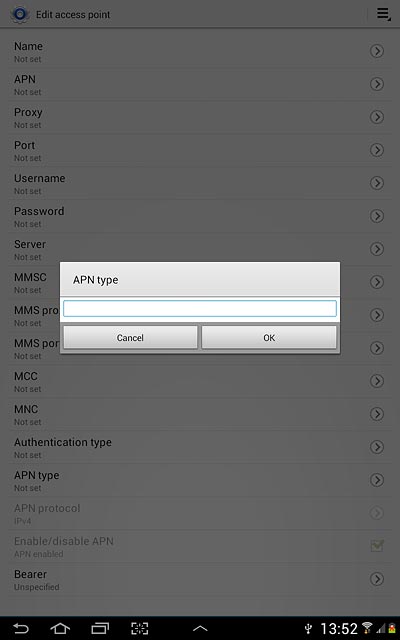
9. Save and activate data connection
Press the menu icon.
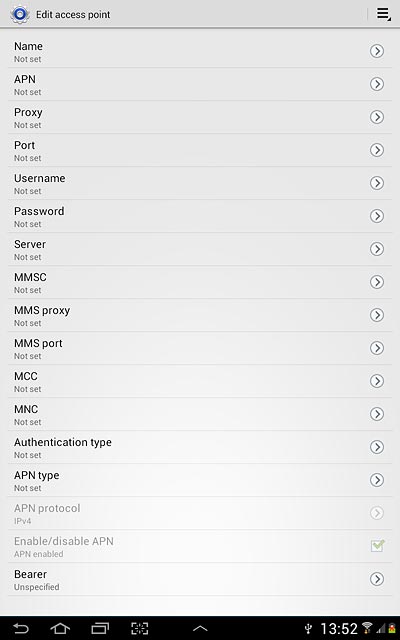
Press Save.
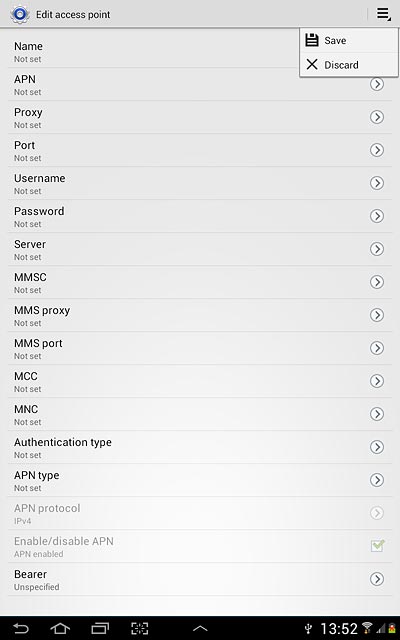
Press the field next to Vodafone Mail to fill in the field.
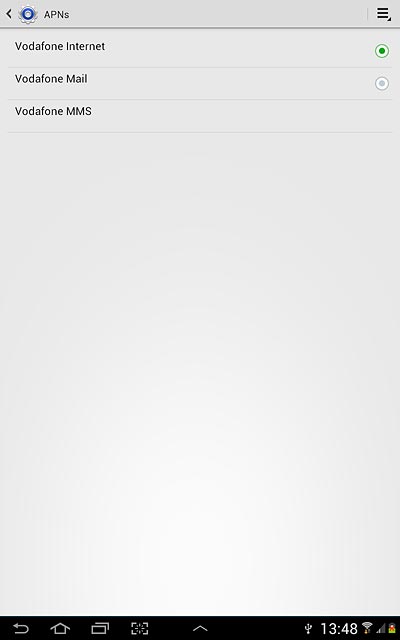
Press the home icon to return to standby mode.
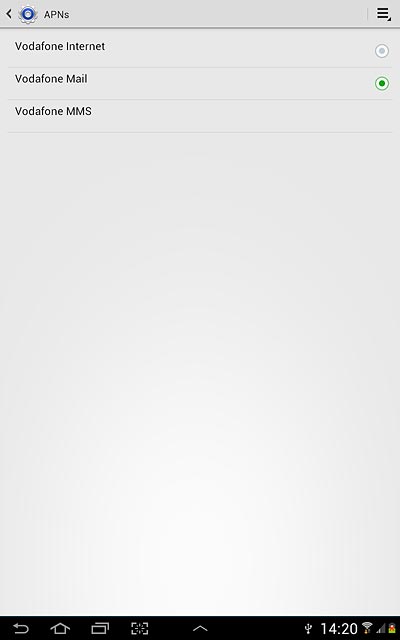
10. Find "Email"
Press the menu icon.
If email accounts have been created already, press the menu icon. Press Settings. Press Add account.
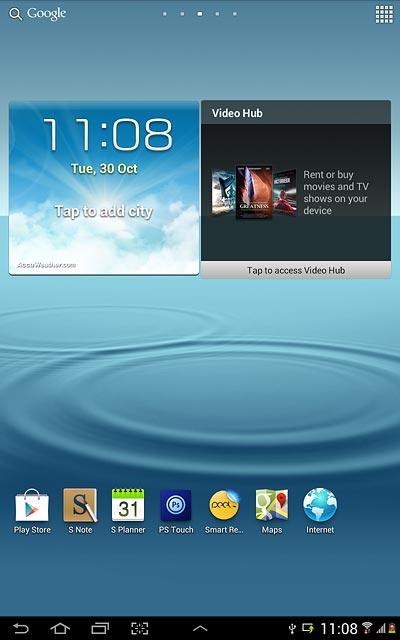
Press Email.
If email accounts have been created already, press the menu icon. Press Settings. Press Add account.
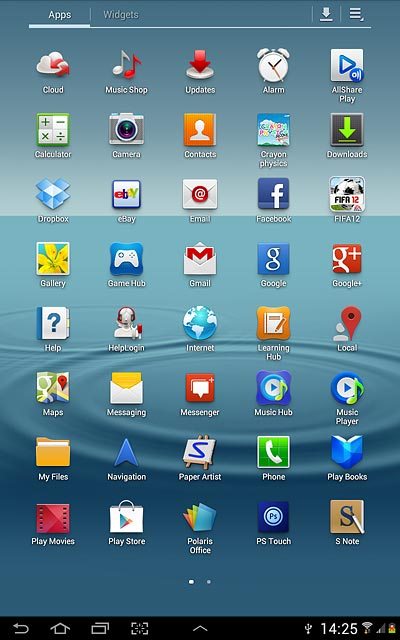
11. Enter email address
Key in your email address.

12. Enter password
Press Password and key in the password for your email account.
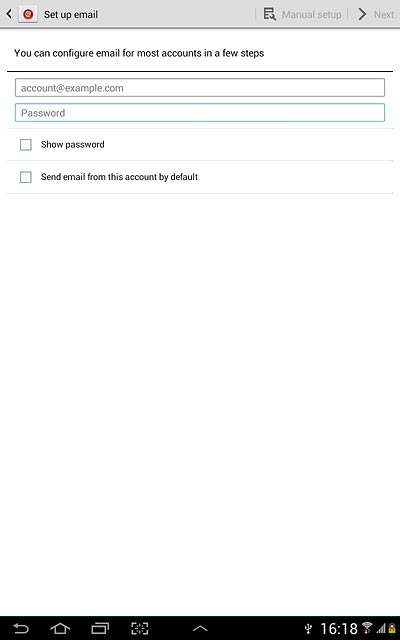
Press Next.
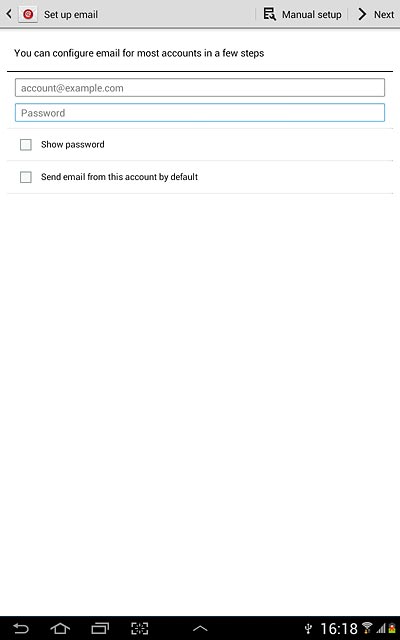
13. Select server type
Press POP3 account.
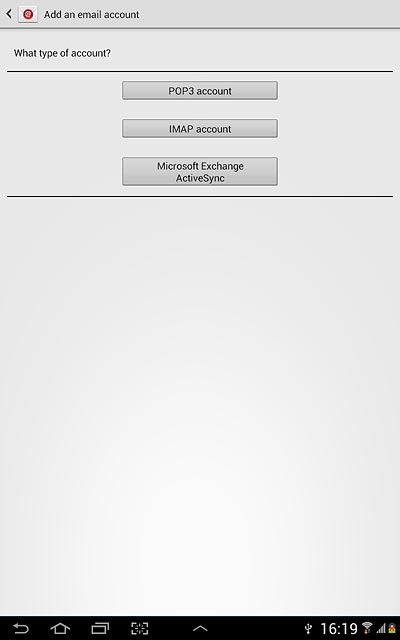
14. Enter username
Key in the username for your email account.

15. Enter incoming server
Press the field below POP3 server and key in the name or IP address of your email provider's incoming server.
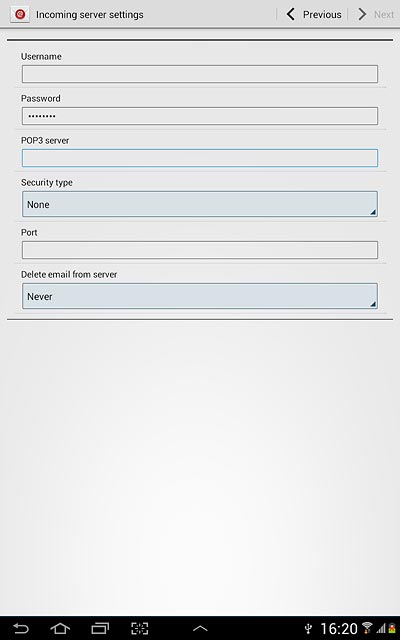
16. Turn encryption of incoming email messages on or off
Press the drop down list below Security type.
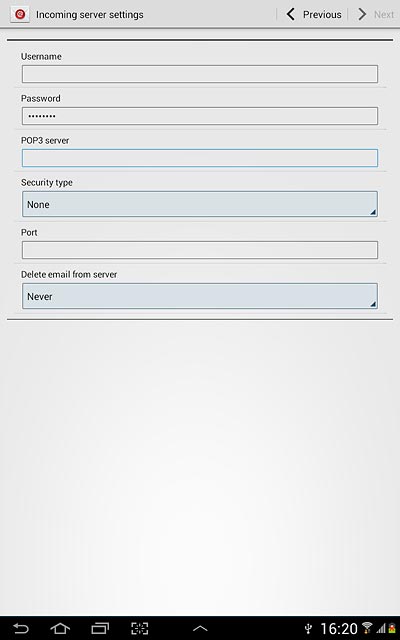
Press None.
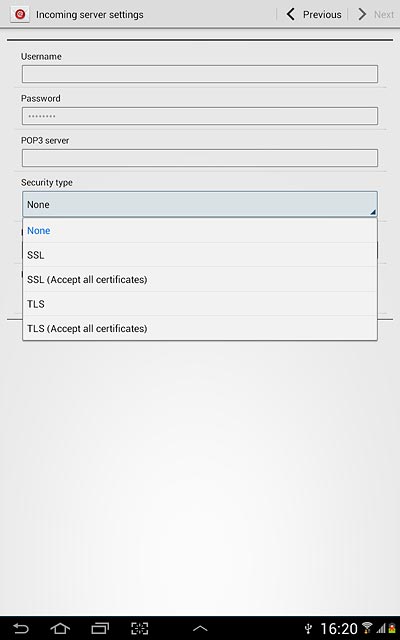
17. Enter incoming port
Press the field below Port and key in 110
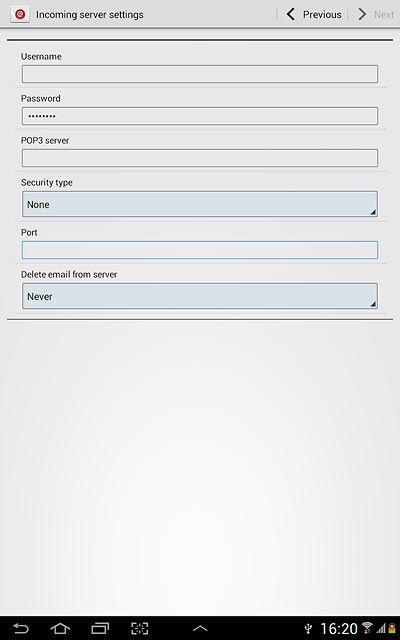
18. Turn deletion of email messages on server on or off
Press the drop down list below Delete email from server.
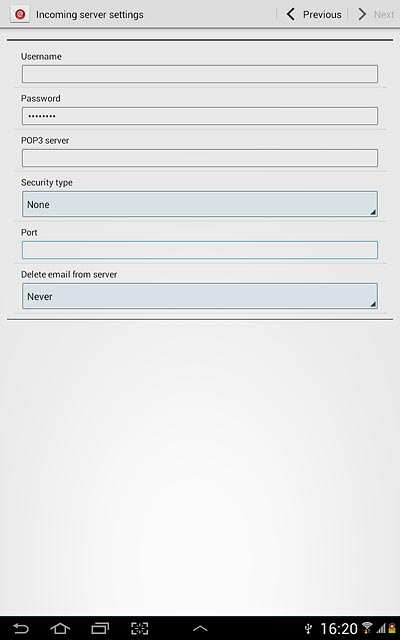
Press Never or When I delete from Inbox.
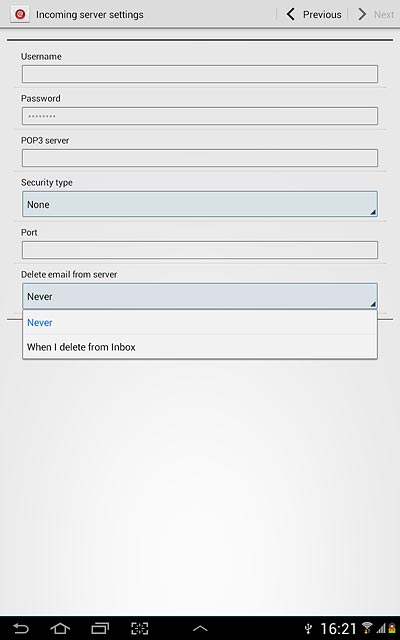
Press Next.
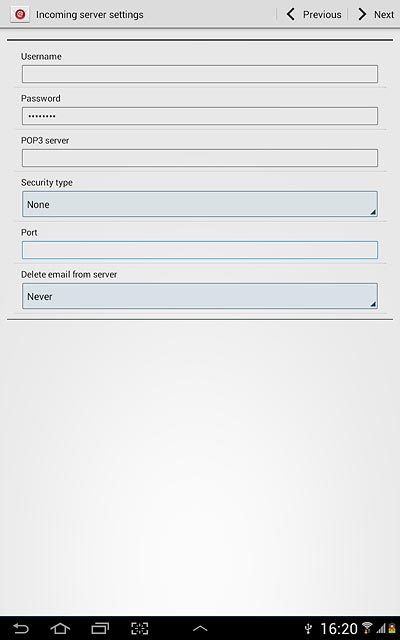
19. Enter outgoing server
Key in the name of your email provider's outgoing server.

20. Turn off encryption of outgoing email messages
Press the drop down list below Security type.
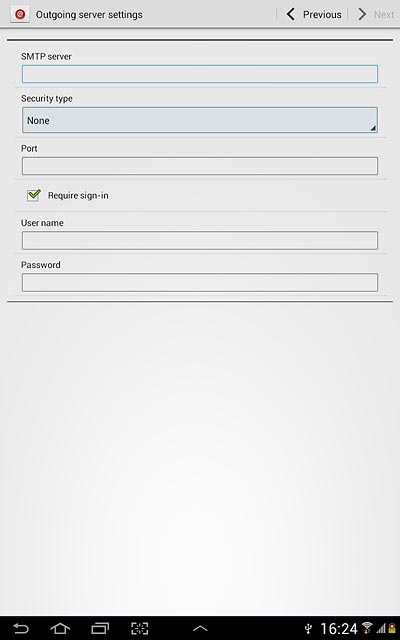
Press None.
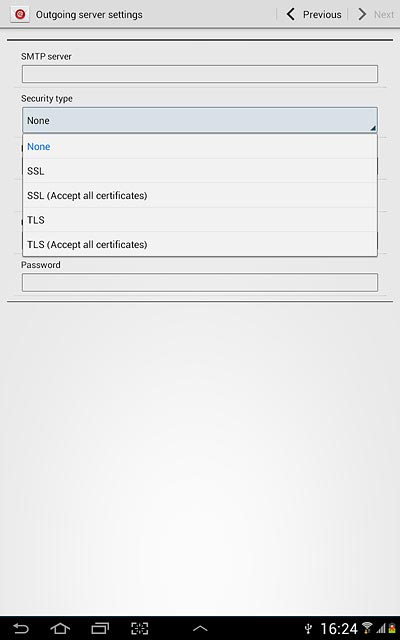
21. Enter outgoing port
Press the field below Port and key in 25
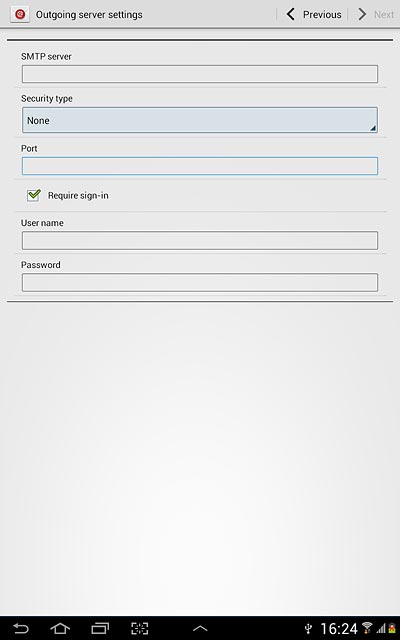
22. Turn SMTP authentication on or off
Press Require sign-in to turn SMTP authentication on or off.
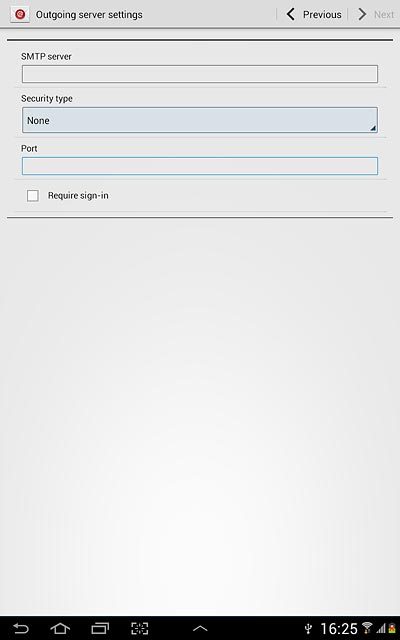
When the box next to the menu item is ticked (V), SMTP authentication is turned on.
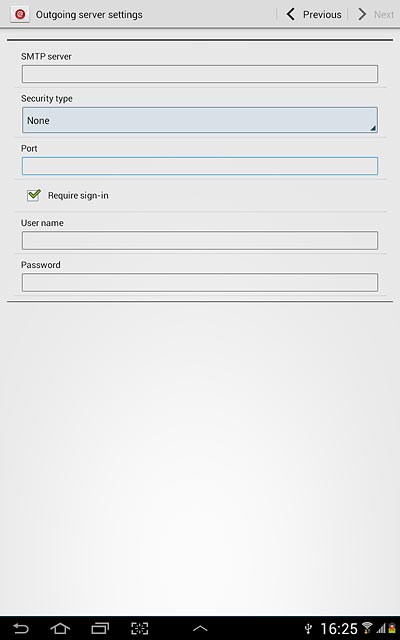
If you turn on SMTP authentication:
Press the field below User name and key in your username for your email provider's outgoing server.
Press the field below User name and key in your username for your email provider's outgoing server.
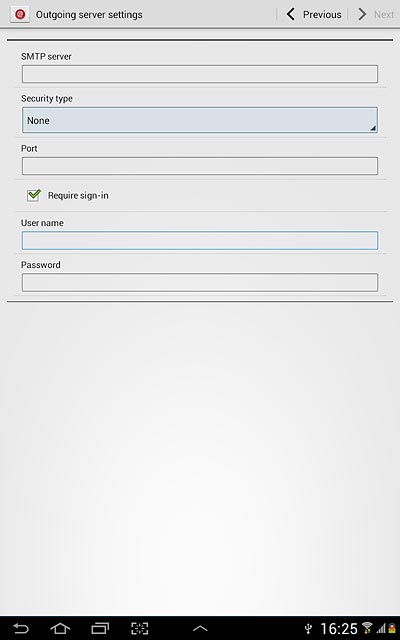
Press the field below Password and key in your password for your email provider's outgoing server.
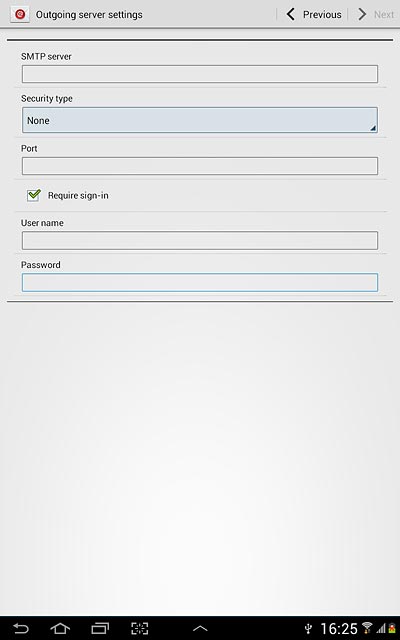
Press Next.
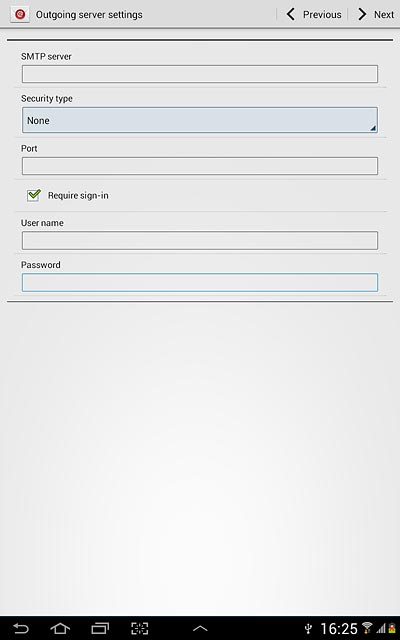
23. Select setting for retrieving new email messages
Press the drop down list below Peak schedule.
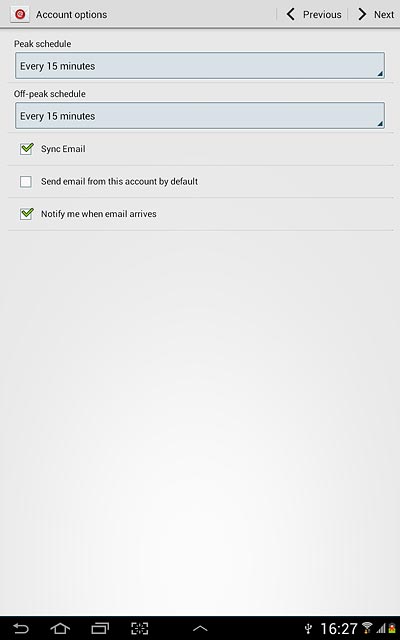
Press Never or the required period.
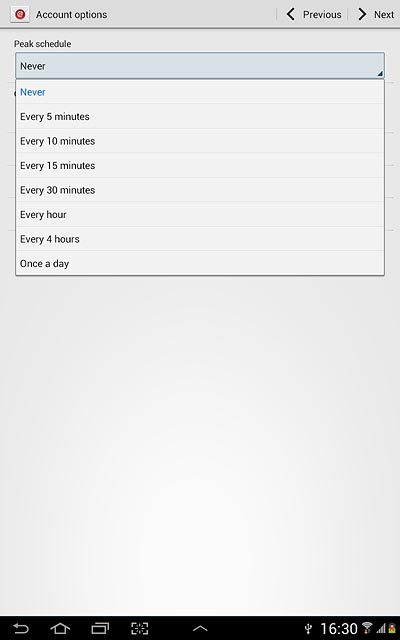
Press the drop down list below Off-peak schedule.
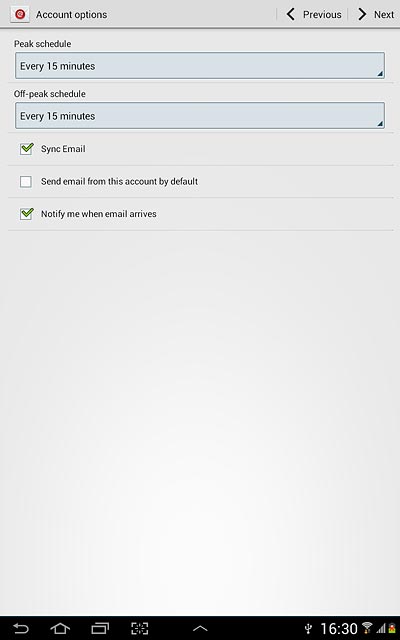
Press Never or the required period.
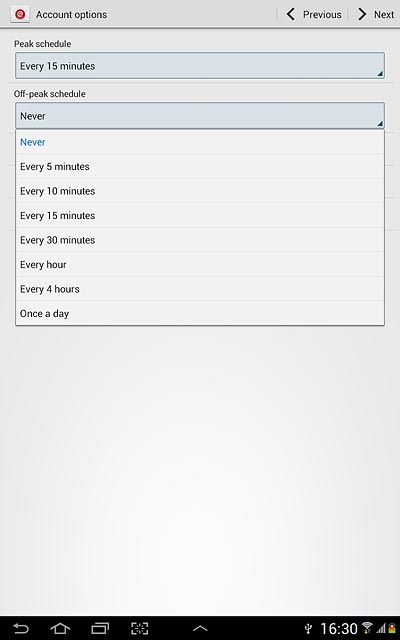
Press Next.
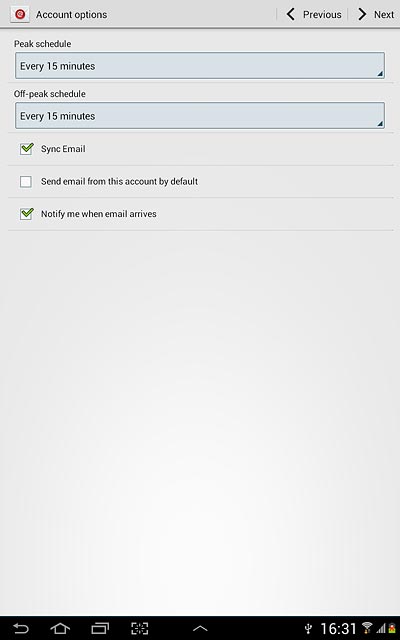
24. Enter email account name
Press the field below Give this account a name (Optional) and key in a name for your email account (such as Private or Work).
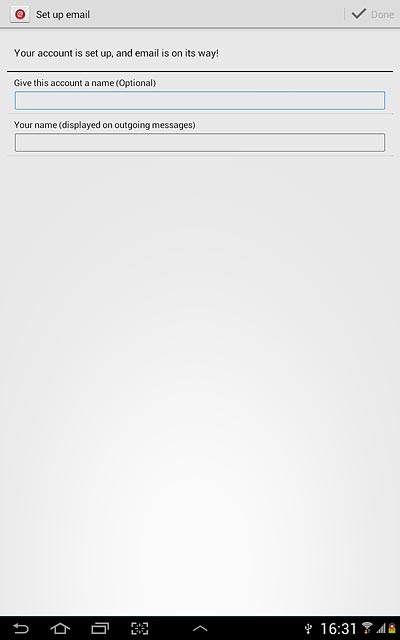
25. Enter sender name
Press the field below Your name (displayed on outgoing messages) and key in the required sender name.
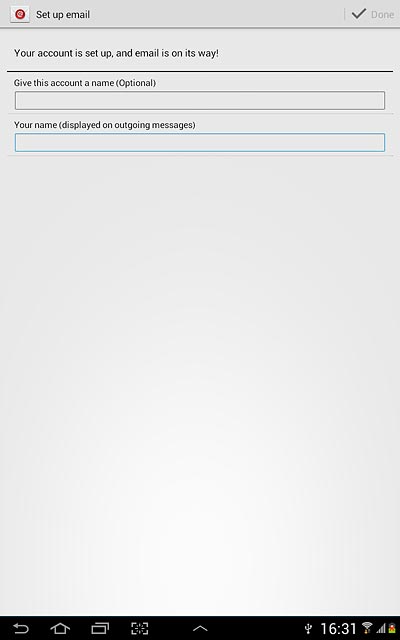
26. Retrieve email messages
Press Done.
Wait while your device retrieves new email messages.
Wait while your device retrieves new email messages.
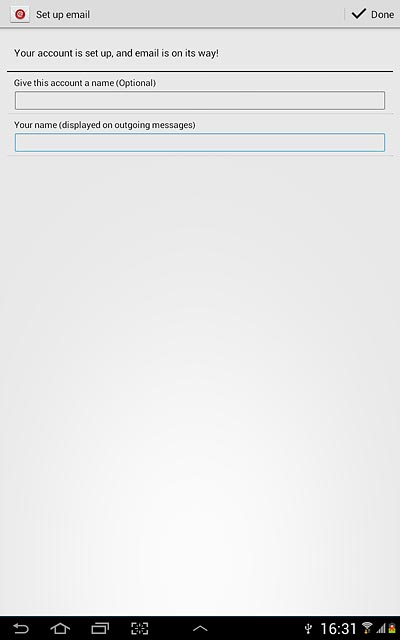
27. Exit
Press the home icon to return to standby mode.
